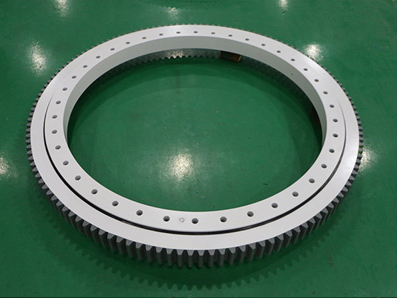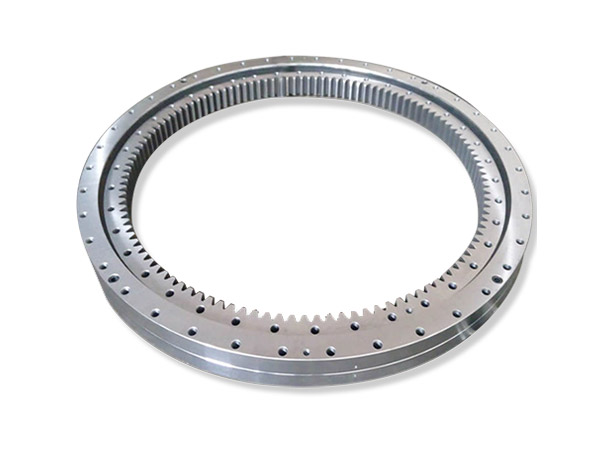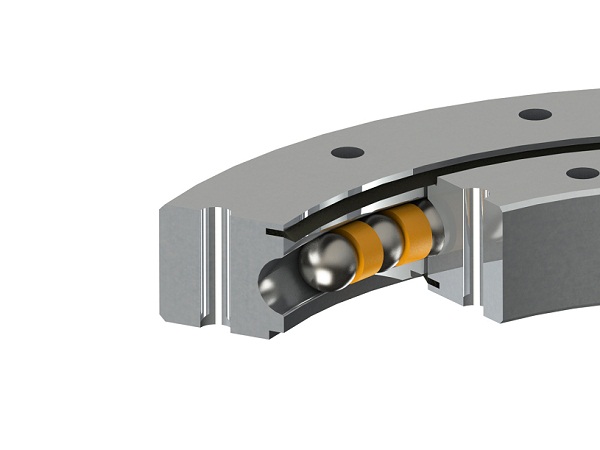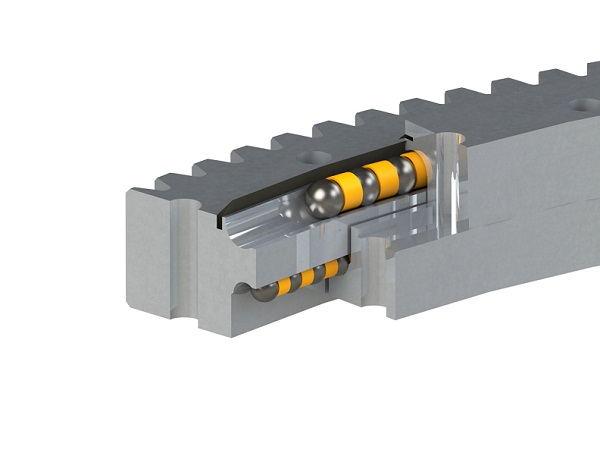Мы знаем, что поворотный подшипник играет очень важную роль в некоторых производствах, и для обеспечения этих функций нам необходимо выполнять множество операций с поворотным подшипником во время использования поворотного подшипника. Уплотнение более распространенных подшипников, тогда зачем использовать поворотный подшипник? чтобы запечатать? Каковы распространенные методы уплотнения опорно-поворотных устройств?
Роль герметичного поворотного подшипника

1. Изолировать посторонние предметы снаружи
Защитите подшипник, чтобы предотвратить попадание внешней пыли, грязи, металлических частиц, влаги, кислого газа и другого мусора внутрь подшипника. Если подшипник плохо герметизирован и попадет внешний мусор, рабочее состояние подшипника значительно ухудшится, а срок службы подшипника значительно сократится.
2. Предотвратить утечку смазки
Если масло вытечет, оно быстро разрушит нормальную смазку подшипника, в результате чего подшипник сгорит из-за перегрева. Кроме того, плохое уплотнительное устройство не только приводит к утечке масла, но и загрязняет механическое оборудование и перерабатываемые продукты. Поэтому, чтобы машина работала исправно, подшипник должен иметь хорошее уплотнительное устройство.
Способ уплотнения поворотного подшипника

Как правило, методы уплотнения подшипников включают контактное уплотнение и бесконтактное уплотнение, но эти два метода уплотнения подходят для разных ситуаций. Контактное уплотнение подходит для подшипников, работающих в условиях средней и низкой скорости, в то время как бесконтактное уплотнение. высокотемпературные операции. Анализ показывает, что способы герметизации опорно-поворотных устройств следующие:
1. Войлочное кольцевое уплотнение
На крышке подшипника открывается трапециевидная канавка, и тонкий войлок на прямоугольной поверхности помещается в трапециевидную канавку для контакта с валом, или сальник прижимается в осевом направлении, так что войлочное кольцо сжимается, создавая радиальное давление и охватывая вал. вал, тем самым достигая цели уплотнения. Структура уплотнения проста, а стоимость низкая, но эффект уплотнения плохой, его нельзя отрегулировать, а износ серьезный.
2. Кожаная чаша запечатана
Поместите уплотнительную манжету в крышку подшипника (чашка изготовлена из резины и других материалов) и напрессуйте ее непосредственно на вал. Чтобы усилить эффект уплотнения, кольцеобразная винтовая пружина используется для прижатия внутреннего кольца кожаной чашки, так что внутреннее кольцо кожаной чашки и вал имеют более плотное прилегание, а эффект уплотнения лучше, чем что из войлочного кольца. /s консистентной смазки или смазки смазочным маслом.
3. Уплотнительное кольцо
Уплотнительное кольцо обычно изготавливается из кожи, пластика или маслостойкой резины и может иметь различные формы поперечного сечения по мере необходимости. Уплотнительное кольцо 0-образной формы имеет круглое сечение и прижимается к валу собственной упругой силой. Он имеет простую конструкцию, легко собирается и разбирается. Также широко используются J-образные и U-образные профильные уплотнения, все из которых имеют форму кромки. Направление уплотнительной кромки направлено к уплотнительной части, что аналогично направлению фланца в чашечном уплотнении. При высокой температуре и высокой скорости вращения рекомендуется также устанавливать уплотнительную кромку вдали от подшипника. Уплотнительный эффект уплотнительного кольца лучше, чем у войлочного кольца, и его можно использовать для герметизации смазки и масла.

4. Каркасное уплотнение
Каркасное уплотнение, о котором мы часто говорим, является усовершенствованием кожаного уплотнения чашки. Для повышения общей прочности кожаного уплотнения чашки в маслостойкую резину устанавливается металлическая подкладка с Г-образным поперечным сечением и общей кольцевой формой, благодаря чему кожаное уплотнение чашки не легко деформируется и улучшается. Применение Этот вид уплотнения прост в установке и обладает хорошими эксплуатационными характеристиками. Как правило, подходит для случаев, когда окружная скорость шейки составляет 7 м/с.
5. Уплотнительное кольцо
Это кольцевое уплотнение с зазором, которое размещается в кольцевой канавке втулки, втулка вращается вместе с валом, а уплотнительное кольцо прижимается к статичной части упругостью зазора после сжатия. На внутренней стенке отверстия он может играть роль уплотнения, и этот вид уплотнения является более сложным.
6. Лабиринтное уплотнение
Основной принцип этого типа уплотнения состоит в том, чтобы сформировать участок канала потока с большим сопротивлением потоку на уплотнении. Конструктивно между неподвижной частью и вращающейся частью образован небольшой извилистый зазор, образующий «лабиринт». Если «лабиринт» радиальный, осевой размер компактен, но радиальный размер больше. Если «лабиринт» осевой, то радиальный размер компактен, но крышка подшипника должна быть разделена, а осевой зазор должен быть больше, чтобы не заедать из-за термической деформации вала. Лабиринтные уплотнения достаточно надежны как для смазочного масла, так и для костной смазки, и чем выше скорость, тем лучше эффект.
Выше приведено краткое изложение методов уплотнения поворотного подшипника, а также всего содержания функции и метода уплотнения. Мы узнали, что опорно-поворотный подшипник выполняет функции изоляции посторонних предметов и предотвращения утечки смазки. Распространенными методами являются уплотнение войлочного кольца, уплотнение кожаной чашки, уплотнение уплотнительного кольца, каркасное уплотнение, уплотнение уплотнительного кольца, лабиринтное уплотнение и т. Д., Вы можете выбрать в соответствии с конкретной ситуацией вашего подшипника.








